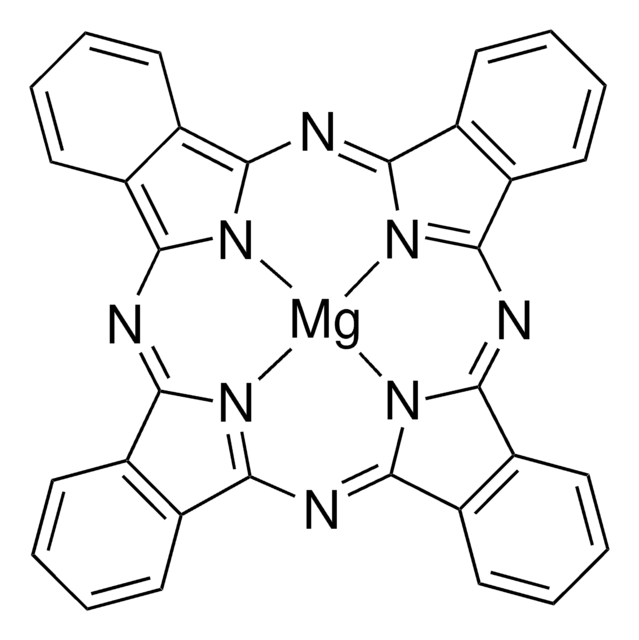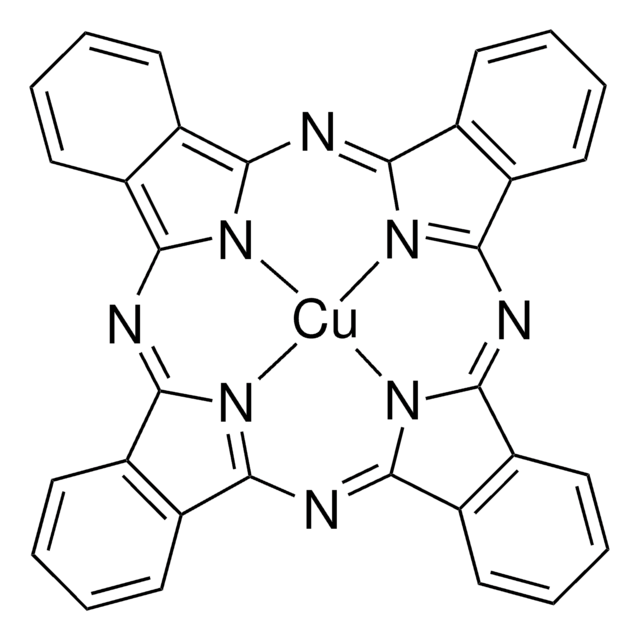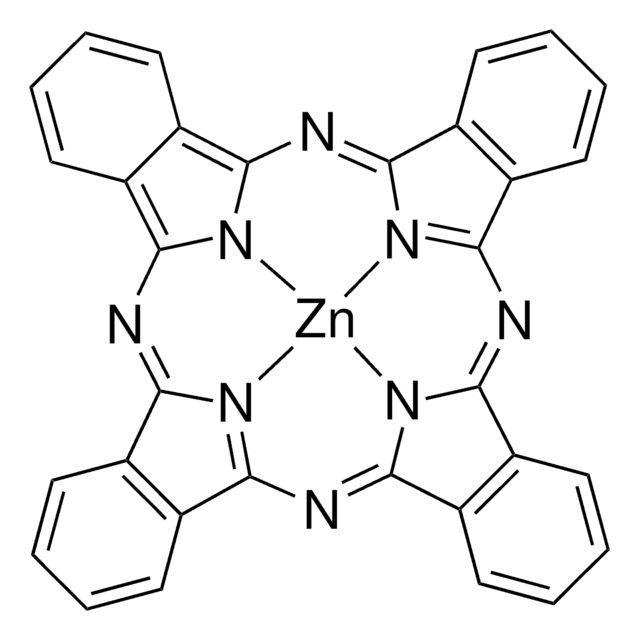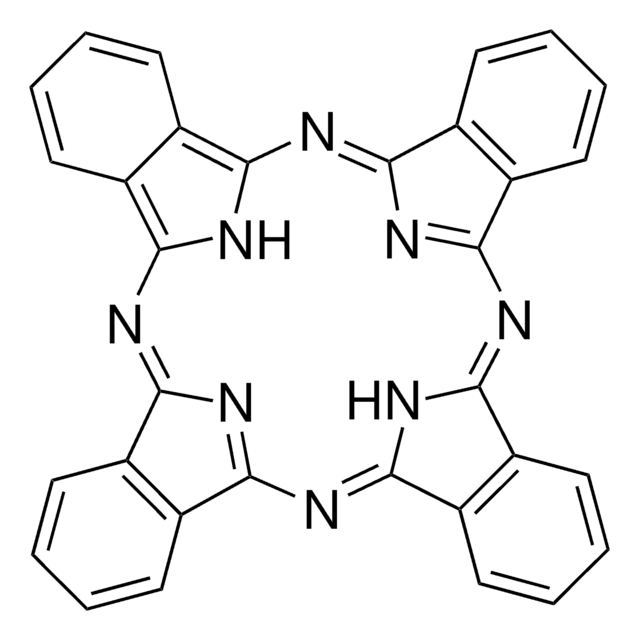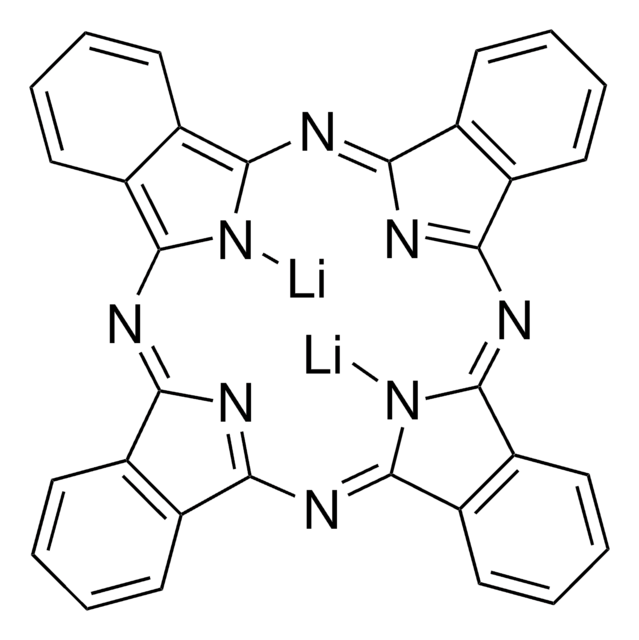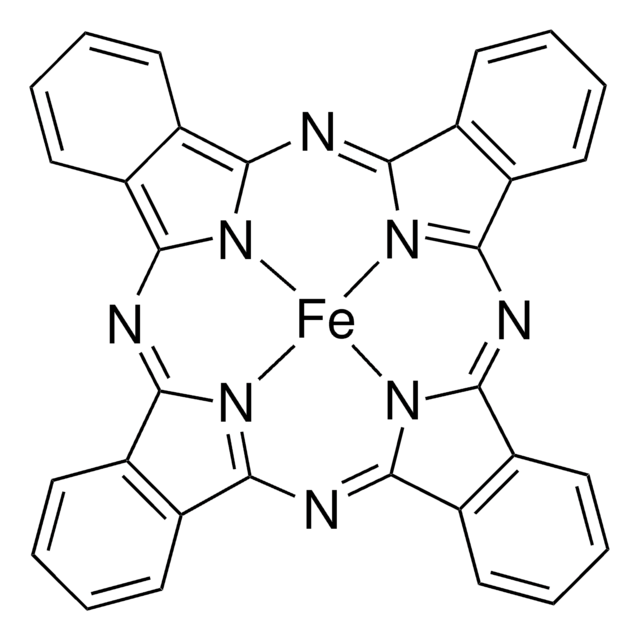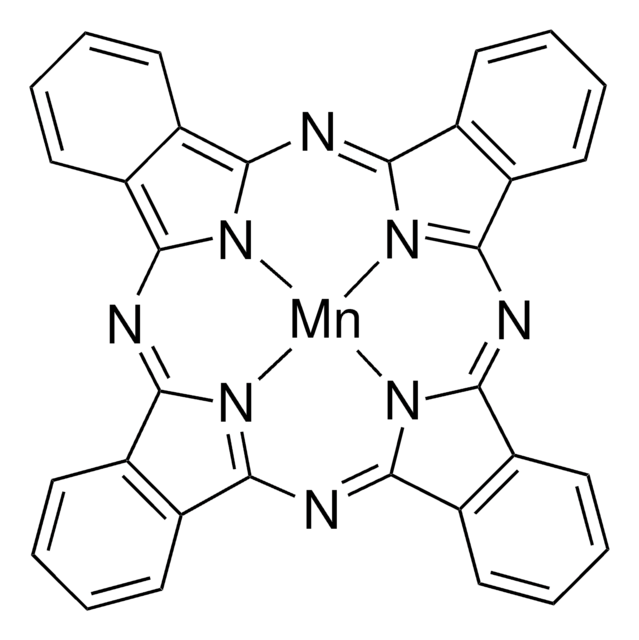931985
Phthalocyanin
Synonym(e):
Dehydrophthalocyanine, H2Pc, Pigment Blue 16
About This Item
Empfohlene Produkte
Beschreibung
PL: 418 nm
μh ≈ 4.0 x 10−5 cm2 V−1 s−1
Qualitätsniveau
mp (Schmelzpunkt)
>300 °C (dec.)
Übergangstemp.
Tg >350 °C ((0.5% weight loss))
Löslichkeit
DMF: soluble
Energie der Orbitale
HOMO 5.35 eV
LUMO 3.35 eV
UV-Absorption
λ: 279 nm Amax
λ: 693 nm Amax
SMILES String
c1ccc2c3nc(nc4[nH]c(nc5nc(nc6[nH]c(n3)c7ccccc67)c8ccccc58)c9ccccc49)c2c1
Suchen Sie nach ähnlichen Produkten? Aufrufen Leitfaden zum Produktvergleich
Anwendung
In the field of organic electronics, H2Pc has been explored as a popular Hole Injection Layer (HIL) material for organic light-emitting diode devices (OLEDs).This special compound has also been explored for solar cells application given its robust and intensely colored macrocycles (blue pigments) with high chem., thermal and light stability, properties that are of paramount importance for realistic photovoltaic applications. H2Pc have attracted special attention as photosensitizers for dye-sensitized solar cells (DSSCs).
In biomedicine, phthalocyanine can serve as selective fluorescent probes for bioanal. and bioimaging, and as efficient photosensitizers for photodynamic therapy of cancer and other non-cancerous conditions.
Ähnliches Produkt
Lagerklassenschlüssel
11 - Combustible Solids
WGK
WGK 1
Flammpunkt (°F)
Not applicable
Flammpunkt (°C)
Not applicable
Analysenzertifikate (COA)
Suchen Sie nach Analysenzertifikate (COA), indem Sie die Lot-/Chargennummer des Produkts eingeben. Lot- und Chargennummern sind auf dem Produktetikett hinter den Wörtern ‘Lot’ oder ‘Batch’ (Lot oder Charge) zu finden.
Besitzen Sie dieses Produkt bereits?
In der Dokumentenbibliothek finden Sie die Dokumentation zu den Produkten, die Sie kürzlich erworben haben.
Unser Team von Wissenschaftlern verfügt über Erfahrung in allen Forschungsbereichen einschließlich Life Science, Materialwissenschaften, chemischer Synthese, Chromatographie, Analytik und vielen mehr..
Setzen Sie sich mit dem technischen Dienst in Verbindung.